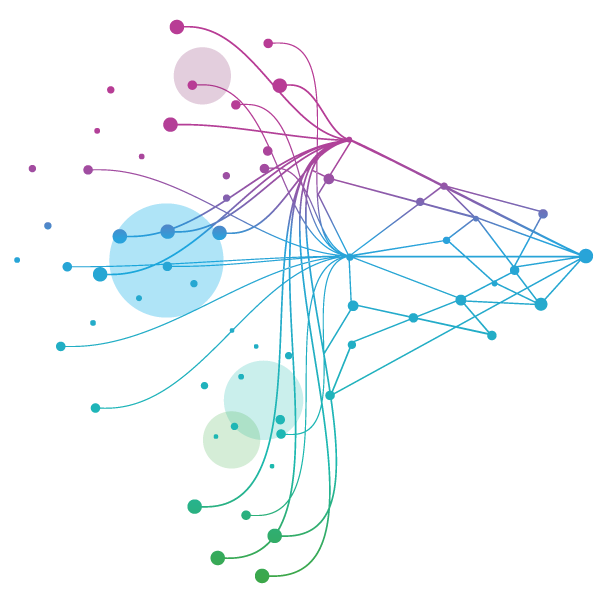Flexible solutions. Responsive teams. Data-driven insights.
Explore IQVIA by region
As a global community, IQVIA continuously invests and commits to advancing human health.
Americas
Europe
Asia & Oceania
Middle East & Africa

Regional Thought Leadership
SOLUTIONS
Research & Development
Real World Evidence
Commercialization
Safety & Regulatory Compliance
Technologies
LIFE SCIENCE SEGMENTS
Consumer Health
Emerging Biopharma
Generics
MedTech
Pharmaceutical Manufacturers
HEALTHCARE SEGMENTS
Information Partner Services
Financial Institutions
Global Health
Government
Patient Associations
Payers
Providers
Therapeutic and Specialty Areas
Therapeutic and Specialty Centers of Excellence offer scientific expertise, therapeutic insights and clinical trial experience to expedite new therapies for patients.
LEARN MORE
Therapeutic and Specialty Areas
Allergy & Respiratory
Biosimilars
Cardiovascular
Cell & Gene Therapy
Central Nervous System
Dermatology
Early Phase Clinical Development
Endocrinology
GI & Hepatology
Infectious Diseases & Vaccines
Nephrology
Obesity
Oncology & Hematology
Ophthalmology
Pediatrics
Rare Diseases
Reproductive Health
Rheumatology
Harness the power to transform clinical development
Reimagine clinical development by intelligently connecting data, technology, and analytics to optimize your trials. The result? Faster decision making and reduced risk so you can deliver life-changing therapies faster.
Research & Development Overview

Clinical Trials
Reach your clinical development milestones faster with precision, expertise, and speed powered by industry-leading data analytics.
Functional Services
Agile, data-driven trial solutions that connect people, processes, and technology for faster, smarter R&D delivery.
Patient & Site Centric Solutions
Support patients and trial sites with tools and services that improve recruitment, engagement, and study execution.
Consulting
Optimize your R&D strategy, reduce risk and ensure compliance with data, analytics, AI-powered technology and expertise.
Therapeutic Expertise
Therapeutic and Specialty Centers of Excellence offer scientific expertise, therapeutic insights and clinical trial experience to expedite new therapies for patients.
Global Laboratories
Specialty and central lab solutions backed by scientific rigor and expertise in biomarkers and antibody drug discovery.
Real World Evidence. Real Confidence. Real Results.
Generate and disseminate evidence that answers crucial clinical, regulatory and commercial questions, enabling you to drive smarter decisions and meet your stakeholder needs with confidence.
REAL WORLD EVIDENCE OVERVIEW

Real World & Health Data Sets
Global real world data exploration at your fingertips enables critical insights across the product lifecycle.
Medical Affairs
Access end-to-end Medical Affairs solutions to plan, generate, and disseminate trustworthy medical evidence.
IQVIA Health Communications Group
Deliver communications that engages stakeholders, advances healthcare and improves lives.
Health Data Apps & AI
Streamline research process and gain access to real world data discovery with the largest agnostic health data catalog.
Health Data Transformation
Accelerate disparate health information into insight-rich, value-driving data transformation at scale.
Study Design
Identify the right study design to answer your research questions with unparalleled data, technology, AI and analytics.
Evidence Networks
Access global evidence networks to connect data, technology, and analytics for broader study options and collaboration.
Health Economics & Value
Generate the evidence you need to go from research to market, overcome regulatory hurdles, or support payer approval.
Regulatory and Safety
Explore options with innovative RWE study approaches to prove your product’s safety and effectiveness.
Natural Language Processing
Extract insights at scale from unstructured text with IQVIA’s advanced NLP platform—fast, accurate, proven.
Real World Evidence Library
Explore our Real World Evidence Library for the latest approaches to answer clinical, regulatory, and commercial questions.
Make treatments stand out. Ensure differentiation lasts.
Enhance commercial effectiveness through precision HCP and patient engagement, backed by unrivalled data, healthcare-grade AI, and domain expertise.
COMMERCIALIZATION OVERVIEW

Data and Information Management
Make better decisions with quality data. Drive business strategies, optimize engagement and uncover new opportunities.
Launch Strategy and Management
Achieve launch excellence with a proven partner. Maximize launch performance and realize full market potential.
Commercial Analytics & Consulting
Gain precision insights for improved commercial effectiveness. Accelerate growth with fact-based decision making.
Commercial Engagement Services
Fuel customer engagement and patient adherence with patient support and commercial outsourcing services.
Established Brands Optimization
Defend market share and maximize value with proven approaches for established brands across global markets.
Service driven. Tech-enabled. Integrated compliance.
Orchestrate your success across the complete compliance lifecycle with best-in-class services and solutions for safety, regulatory, quality and medical information.
COMPLIANCE OVERVIEW

Safety Pharmacovigilance
Pharmacovigilance powered by human expertise and advanced technology to deliver speed, accuracy, and global compliance.
Regulatory Compliance
Regulatory solutions blending human expertise and technology to cut complexity, cost, and risk across the lifecycle.
Quality Compliance
Break down quality and compliance silos with integrated software and services across the full product lifecycle.
Medical Information
Medical information delivered by skilled professionals and innovative technology for quality, scalable support worldwide.
Commercial Compliance
Experienced teams and advanced technology deliver scalable, transparent, and reliable commercial compliance.
Harness technology for a healthier world.
IQVIA Technologies helps life sciences accelerate innovation to make a greater impact on human health. Our transformative technologies harness intelligence, integrate industry leading data and analytics, and use advance AI/ML capabilities to unleash business potential faster.
TECHNOLOGIES OVERVIEW

Site Suite
Increase transparency, improve communications and reduce administrative burden of your clinical trials from start to finish.
Patient Suite
Simplify trials with a solution that improves operations, elevates experience, and drives better patient outcomes.
Clinical Trial Financial Suite
AI-powered platform unifying budgeting, contracting, forecasting, and payments for streamlined clinical trial financial management.
Safety Suite
Streamline pharmacovigilance with AI-powered automation, global expertise, and real-time safety insights.
Quality Management and Regulatory Suite
Streamline global QA/RA processes with AI-enabled QMS & RIM for compliance, efficiency, and faster market access.
Partner Programs
Join our partner ecosystem to build alliances, drive business value, and create mutually beneficial relationships.
Technology Insights
Check out the latest tech-related resources, thought leadership and best practices for insights that matter most in Life Sciences.
Commercial Compliance
Work with compliance experts to create and manage processes ensuring global regulation compliance.
The IQVIA difference
CLINICAL PRODUCTS
Planning Suite
Grant Plan
Site Suite
Clinical Trial Payments
Investigator Site Portal
One Home for Sites
Patient Engagement Suite
Electronic Clinical Outcome Assessment (eCOA)
Interactive Response Technology (IRT)
Clinical Data Analytics Solutions
COMMERCIAL PRODUCTS
Information Management
Launch Strategy & Management
Pricing & Market Access
Brand Strategy & Management
Promotional Engagement
Patient Insights for HCP Engagement
Alerts & Triggers
Orchestrated Analytics
Next Best Action
Patient Engagement and Support
COMPLIANCE, SAFETY, REG PRODUCTS
IQVIA Vigilance Platform
Commercial Compliance
Regulatory Compliance
RIM Smart
Quality Compliance
SmartSolve eQMS
Safety & Pharmacovigilance
REAL WORLD PRODUCTS
Real World & Healthcare Data
Health Data Apps & AI
Analytics Research Accelerator
Expert Ecosystem
AI Patient & HCP Profiling- Commercial
AI Patient & Provider Profiling- Med Affairs
AI Patient & HCP Profiling- Healthcare
Natural Language Processing
Market Access Insights
Direct-to-Patient Research
Innovation at IQVIA
At IQVIA our foundation is built on innovation. We are committed to finding new and smarter approaches to solving customer challenges. Explore some of the latest ways we can help drive your results.

IQVIA AI
We’ve developed a novel approach to AI specifically for life sciences to ensure trust, transparency, and transformational results.
Explore IQVIA AI

Collaborating with NVIDIA to launch AI agents
IQVIA’s new custom-built AI agents using NVIDIA technology are designed to enhance workflows and accelerate insights for life sciences.
Read the press release

Protocol Design Optimization
Transform clinical trials with data-driven insights and patient-centric strategies to create smarter protocols, reduce risk, and accelerate study success."
Explore Protocol Design Optimization

IQVIA Medical Reasoning LLM
“Med-R1 8B” is built to empower healthcare and life science organizations, enhance decision-making, and ultimately transform patient outcomes.
Explore IQVIA Medical Reasoning
BLOGS, WHITE PAPERS & CASE STUDIES
Explore our library of insights, thought leadership, and the latest topics & trends in healthcare.
DISCOVER INSIGHTS
THE IQVIA INSTITUTE
An in-depth exploration of the global healthcare ecosystem with timely research, insightful analysis, and scientific expertise.
SEE LATEST REPORTS

WE'RE HIRING
At IQVIA your potential has no limits. We thrive on bold ideas and fearless innovation. Join us in reimagining what’s possible.
VIEW ROLES
Explore IQVIA by region
As a global community, IQVIA continuously invests and commits to advancing human health.
Americas
Europe
Asia & Oceania
Middle East & Africa

Regional Thought Leadership
SOLUTIONS
Research & Development
LIFE SCIENCE SEGMENTS
Consumer Health
Emerging Biopharma
Generics
MedTech
Pharmaceutical Manufacturers
HEALTHCARE SEGMENTS
Information Partner Services
Financial Institutions
Global Health
Government
Patient Associations
Payers
Providers
Therapeutic and Specialty Areas
Therapeutic and Specialty Centers of Excellence offer scientific expertise, therapeutic insights and clinical trial experience to expedite new therapies for patients.
LEARN MORE
Therapeutic and Specialty Areas
Allergy & Respiratory
Biosimilars
Cardiovascular
Cell & Gene Therapy
Central Nervous System
Dermatology
Early Phase Clinical Development
Endocrinology
GI & Hepatology
Infectious Diseases & Vaccines
Nephrology
Obesity
Oncology & Hematology
Ophthalmology
Pediatrics
Rare Diseases
Reproductive Health
Rheumatology
Harness the power to transform clinical development
Reimagine clinical development by intelligently connecting data, technology, and analytics to optimize your trials. The result? Faster decision making and reduced risk so you can deliver life-changing therapies faster.
Research & Development Overview

Clinical Trials
Reach your clinical development milestones faster with precision, expertise, and speed powered by industry-leading data analytics.
Functional Services
Agile, data-driven trial solutions that connect people, processes, and technology for faster, smarter R&D delivery.
Patient & Site Centric Solutions
Support patients and trial sites with tools and services that improve recruitment, engagement, and study execution.
Consulting
Optimize your R&D strategy, reduce risk and ensure compliance with data, analytics, AI-powered technology and expertise.
Therapeutic Expertise
Therapeutic and Specialty Centers of Excellence offer scientific expertise, therapeutic insights and clinical trial experience to expedite new therapies for patients.
Global Laboratories
Specialty and central lab solutions backed by scientific rigor and expertise in biomarkers and antibody drug discovery.
Real World Evidence. Real Confidence. Real Results.
Generate and disseminate evidence that answers crucial clinical, regulatory and commercial questions, enabling you to drive smarter decisions and meet your stakeholder needs with confidence.
REAL WORLD EVIDENCE OVERVIEW

Real World & Health Data Sets
Global real world data exploration at your fingertips enables critical insights across the product lifecycle.
Medical Affairs
Access end-to-end Medical Affairs solutions to plan, generate, and disseminate trustworthy medical evidence.
IQVIA Health Communications Group
Deliver communications that engages stakeholders, advances healthcare and improves lives.
Health Data Apps & AI
Streamline research process and gain access to real world data discovery with the largest agnostic health data catalog.
Health Data Transformation
Accelerate disparate health information into insight-rich, value-driving data transformation at scale.
Study Design
Identify the right study design to answer your research questions with unparalleled data, technology, AI and analytics.
Evidence Networks
Access global evidence networks to connect data, technology, and analytics for broader study options and collaboration.
Health Economics & Value
Generate the evidence you need to go from research to market, overcome regulatory hurdles, or support payer approval.
Regulatory and Safety
Explore options with innovative RWE study approaches to prove your product’s safety and effectiveness.
Natural Language Processing
Extract insights at scale from unstructured text with IQVIA’s advanced NLP platform—fast, accurate, proven.
Real World Evidence Library
Explore our Real World Evidence Library for the latest approaches to answer clinical, regulatory, and commercial questions.
Make treatments stand out. Ensure differentiation lasts.
Enhance commercial effectiveness through precision HCP and patient engagement, backed by unrivalled data, healthcare-grade AI, and domain expertise.
COMMERCIALIZATION OVERVIEW

Data and Information Management
Make better decisions with quality data. Drive business strategies, optimize engagement and uncover new opportunities.
Launch Strategy and Management
Achieve launch excellence with a proven partner. Maximize launch performance and realize full market potential.
Commercial Analytics & Consulting
Gain precision insights for improved commercial effectiveness. Accelerate growth with fact-based decision making.
Commercial Engagement Services
Fuel customer engagement and patient adherence with patient support and commercial outsourcing services.
Established Brands Optimization
Defend market share and maximize value with proven approaches for established brands across global markets.
Service driven. Tech-enabled. Integrated compliance.
Orchestrate your success across the complete compliance lifecycle with best-in-class services and solutions for safety, regulatory, quality and medical information.
COMPLIANCE OVERVIEW

Safety Pharmacovigilance
Pharmacovigilance powered by human expertise and advanced technology to deliver speed, accuracy, and global compliance.
Regulatory Compliance
Regulatory solutions blending human expertise and technology to cut complexity, cost, and risk across the lifecycle.
Quality Compliance
Break down quality and compliance silos with integrated software and services across the full product lifecycle.
Medical Information
Medical information delivered by skilled professionals and innovative technology for quality, scalable support worldwide.
Commercial Compliance
Experienced teams and advanced technology deliver scalable, transparent, and reliable commercial compliance.
Harness technology for a healthier world.
IQVIA Technologies helps life sciences accelerate innovation to make a greater impact on human health. Our transformative technologies harness intelligence, integrate industry leading data and analytics, and use advance AI/ML capabilities to unleash business potential faster.
TECHNOLOGIES OVERVIEW

Site Suite
Increase transparency, improve communications and reduce administrative burden of your clinical trials from start to finish.
Patient Suite
Simplify trials with a solution that improves operations, elevates experience, and drives better patient outcomes.
Clinical Trial Financial Suite
AI-powered platform unifying budgeting, contracting, forecasting, and payments for streamlined clinical trial financial management.
Safety Suite
Streamline pharmacovigilance with AI-powered automation, global expertise, and real-time safety insights.
Quality Management and Regulatory Suite
Streamline global QA/RA processes with AI-enabled QMS & RIM for compliance, efficiency, and faster market access.
Partner Programs
Join our partner ecosystem to build alliances, drive business value, and create mutually beneficial relationships.
Technology Insights
Check out the latest tech-related resources, thought leadership and best practices for insights that matter most in Life Sciences.
Commercial Compliance
Work with compliance experts to create and manage processes ensuring global regulation compliance.
The IQVIA difference
CLINICAL PRODUCTS
Planning Suite
Grant Plan
Site Suite
Clinical Trial Payments
Investigator Site Portal
One Home for Sites
Patient Engagement Suite
Electronic Clinical Outcome Assessment (eCOA)
Interactive Response Technology (IRT)
Clinical Data Analytics Solutions
COMMERCIAL PRODUCTS
Information Management
Launch Strategy & Management
Pricing & Market Access
Brand Strategy & Management
Promotional Engagement
Patient Insights for HCP Engagement
Alerts & Triggers
Orchestrated Analytics
Next Best Action
Patient Engagement and Support
COMPLIANCE, SAFETY, REG PRODUCTS
IQVIA Vigilance Platform
Commercial Compliance
Regulatory Compliance
RIM Smart
Quality Compliance
SmartSolve eQMS
Safety & Pharmacovigilance
REAL WORLD PRODUCTS
Real World & Healthcare Data
Health Data Apps & AI
Analytics Research Accelerator
Expert Ecosystem
AI Patient & HCP Profiling- Commercial
AI Patient & Provider Profiling- Med Affairs
AI Patient & HCP Profiling- Healthcare
Natural Language Processing
Market Access Insights
Direct-to-Patient Research
Innovation at IQVIA
At IQVIA our foundation is built on innovation. We are committed to finding new and smarter approaches to solving customer challenges. Explore some of the latest ways we can help drive your results.

IQVIA AI
We’ve developed a novel approach to AI specifically for life sciences to ensure trust, transparency, and transformational results.
Explore IQVIA AI

Collaborating with NVIDIA to launch AI agents
IQVIA’s new custom-built AI agents using NVIDIA technology are designed to enhance workflows and accelerate insights for life sciences.
Read the press release

Protocol Design Optimization
Transform clinical trials with data-driven insights and patient-centric strategies to create smarter protocols, reduce risk, and accelerate study success."
Explore Protocol Design Optimization

IQVIA Medical Reasoning LLM
“Med-R1 8B” is built to empower healthcare and life science organizations, enhance decision-making, and ultimately transform patient outcomes.
Explore IQVIA Medical Reasoning
BLOGS, WHITE PAPERS & CASE STUDIES
Explore our library of insights, thought leadership, and the latest topics & trends in healthcare.
DISCOVER INSIGHTS
THE IQVIA INSTITUTE
An in-depth exploration of the global healthcare ecosystem with timely research, insightful analysis, and scientific expertise.
SEE LATEST REPORTS

WE'RE HIRING
At IQVIA your potential has no limits. We thrive on bold ideas and fearless innovation. Join us in reimagining what’s possible.
VIEW ROLES
Institute Report
Expanding Options for Emerging Biopharma in the U.S.: A Decade of Change
Oct 29, 2025
- Insights
- The IQVIA Institute
- Reports and Publications
- Reports
- Expanding Options for Emerging Biopharma in the U.S.: A Decade of Change
Report Summary:
Emerging biopharma companies – those with R&D spending less than $200Mn and revenues less than $500Mn a year – have become central to biomedical innovation over the past decade, driving the majority of novel drug launches, notably in specialty, orphan, and first-in-class categories. Their agility, resilience, strategic diversity, and focus on unmet needs position them as engines of progress in the health system.
Increasingly these companies are exploring commercial markets on their own and there have been demonstrated successes with these efforts. However, challenges remain in funding, commercialization, and achieving sustained market success.
Key Findings:
- Emerging biopharma companies – those with R&D spending less than $200Mn and revenues less than $500Mn a year – have become central to biomedical innovation over the past decade, driving the majority of novel drug launches, notably in specialty, orphan, and first-in-class categories. Their agility, resilience, strategic diversity, and focus on unmet needs position them as engines of progress in the health system. Increasingly these companies are exploring commercial markets on their own and there have been demonstrated successes with these efforts. However, challenges remain in funding, commercialization, and achieving sustained market success.
- Funding for EBPs continues and increasingly includes a focus on China-originated assets. Large ($2Bn+) deals in 2025 through July exceeded the full year 2024 total and are set for another large year with a focus on oncology, obesity, neurology, and AI.
- EBPs demonstrate higher productivity than larger companies, driven by less complex and faster trials despite lower success rates.
- EBPs commercialized 197 of 497 U.S. NAS launches in the past decade, including 205 drugs through the abbreviated 505(b)(2) pathway. Their share of launches has grown, reaching 46% of NAS and 56% of 505(b)(2) launches from 2020–2024. U.S.-headquartered EBPs represented 74% of U.S. EBP NAS launches in the past 10 years, and 80% of 505(b)(2)s.
- Post-launch, EBPs often continue to market drugs, out-license, or are acquired. Of the 197 NAS initially commercialized by 176 EBPs, 69 companies retained the drug, 58 were subsequently acquired, and 21 companies out-licensed the launched drug while remaining in operation for the development and commercialization of other assets. Acquisitions of EBPs following product launch were valued at more than $171Bn, with notable deals including AstraZeneca’s acquisition of Alexion for $39Bn and Gilead’s acquisition of Immunomedics for $21Bn.
- Launch success across product types is most often associated with expansive plans to demonstrate efficacy to diverse stakeholders. Evidence development beyond initial approval, realistic product assessments, and efficient promotional activity are key. Follow-on approvals for new indications, populations, or formulations drive sustained growth, though not all drugs are suited for such opportunities.

- A set of common definitions is helpful to fully understand the role that emerging biopharma companies play relative to other participants in the global biopharmaceutical sector. Defining companies by revenue and pipeline activity offers a simple yet effective way of mapping types of companies.
- For the purposes of this report, segments are determined based on the 2024 calendar year with the exception of analysis of drug origination which assesses companies at the time of origination (first patent filing or first clinical trial).
- Emerging biopharma (EBP) companies are defined as those with either R&D spend <$200Mn or prescription sales up to $500Mn. Companies with any active pipeline since 2014 were included. Commercial EBP (310)and pre-commercial EBP companies (1,447) are distinguished by the presence of sales or not.

- The number of novel active substances launched globally has increased significantly over the past 20 years, more than doubling in 2020-2024 compared to 2005–2009.
- Emerging biopharma companies were the originators of more than half of the 1,005 NAS over the past 20 years, and have been responsible for most of the increase in the overall total.
- In 2005-2009 EBP companies originated 68 NAS, 43.5% of the NAS in that period. In 2020–2024 EBP originators accounted for 65% (258) of the 394 in the past five years, 58% (189) excluding China-only launches.

- Over the past decade, EBP companies were responsible for FDA filing and initial launch of 197 novel active substances (NAS) and 205 drugs approved through the abbreviated 505(b)(2) pathway, and annual variability is high for both types of launches.
- Of the 273 U.S. NAS launches in the past five years, EBP were the FDA filing company for 126. For the 232 launches using the 505(b)(2) abbreviated pathway, EBPs filed 130 of them.
- Even as the number of NAS and 505(b)(2) launches have been increasing, the share of those launched by EBP companies has been growing even faster.

- Commercialization by EBPs is followed by important changes for the companies involved, with some continuing to market those medicines, with mixed success, while others sell the company or license the drug to another company, and others ultimately fail.
- Of the 197 NAS initially commercialized by 176 EBP companies in the past10years, 69 of the companies have retained the drug and continued to operate, while the remainder faced some sort of change.
- Larger companies acquired 58 of the companies at some point after launch, and 21 of the companies out-licensed the drug(s) to a larger company.

- Across both novel active substances and 505(b) (2) products from EBP sponsors, key factors are consistently associated with successful launches.
- As with any launch, product differentiation alone is not the driver of success. Sponsors must plan for and invest in the kinds of evidence, and supportive resources needed by stakeholders both at initial launch and in the periods that follow.
- Evidence development beyond initial approval is key both for additional approved uses, but also to reflect that competitors are also active with their own products.
Related solutions
Emerging Biopharma





